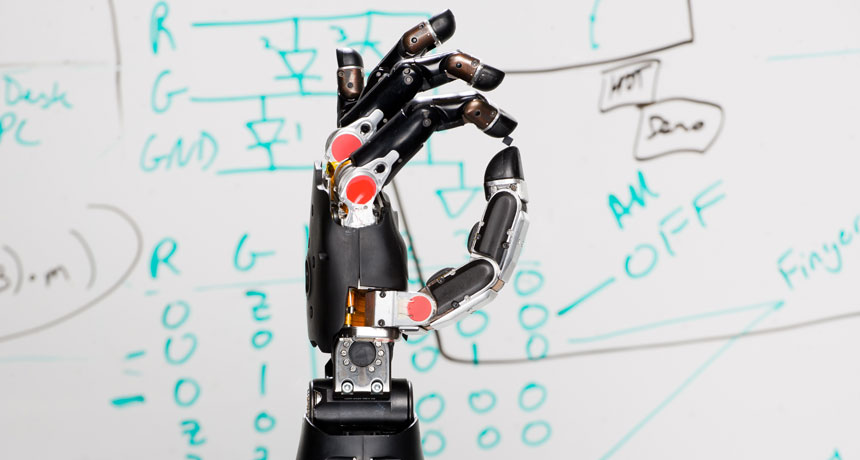Very subtle control of artificial limbs by means of a tiny electronic device may become possible.… [The] electronic device … [is] designed to be injected into a muscle through a thick hypodermic needle. A tiny package strapped to the outside of the limb will beam radio waves at the device, which will return them, modified by the electric current produced in the muscle. — Science News, November 18, 1967
Update
Artificial limbs have become more sophisticated than in the past, and users’ control of today’s prostheses is more precise. In 2012, researchers announced that a paralyzed woman could control a robotic arm with her thoughts with the help of a brain implant (SN: 6/16/12, p. 5). And in 2014, a man regained the sense of touch through a prosthetic hand via electrodes implanted in his arm’s still-functioning nerves (SN: 3/8/14, p. 16). Several companies are developing other high-tech prostheses.
相关文章
Chinese Football Association accelerates restructuring process, reducing divisions from 21 to 16
The Chinese Football Association (CFA) has accelerated its internal restructuring process after its leadership reshuffle in October. Its latest disclosed restructuring plan has cut the number of divisions within the CFA from 21 to 16. Also, it is highly likely that the future operation of the Chinese third-tier professional soccer league will be unified under […]
New platform eyes ‘slow fashion’ to inspire designers, customers
For Li Bin, contact with the textile industry was rather accidental. Born in 1989, Li used to work in branding and PR, but got involved in sustainable fashion in 2020 amid the global pandemic, after developing a sudden interest. In recent years, China's second-hand clothing market has been attracting more and more young people, driven […]
Will Smith narrates ‘One Strange Rock,’ but astronauts are the real stars
“The strangest place in the whole universe might just be right here.” So says actor Will Smith, narrating the opening moments of a new documentary series about the wonderful unlikeliness of our own planet, Earth. One Strange Rock, premiering March 26 on the National Geographic Channel, is itself a peculiar and unlikely creation. Executive produced […]
Distant galaxies lack dark matter, study suggests
Very distant galaxies have surprisingly little dark matter, the invisible stuff thought to make up the bulk of matter in the universe, new observations suggest. Stars in the outer regions of some far-off galaxies move more slowly than stars closer to the center, indicating a lack of dark matter, astronomer Reinhard Genzel and colleagues report […]
